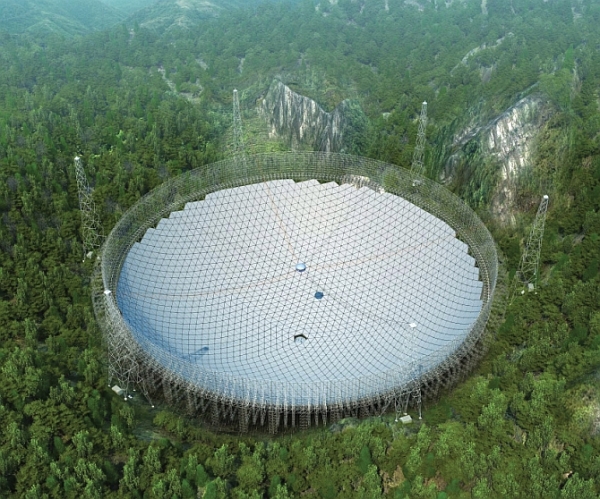China is frantically giving finishing touches to world’s largest radio telescope designed to find signs of alien life following NASA’s recent discovery of ‘Earth 2.0’ with the planet-hunting Kepler space telescope.
While NASA basked in the success of discovering an earth-like planet around 1,400 light years away with Kepler 452b, China announced that it has started assembling the world’s largest radio telescope, which is the size of 30 football fields in its Guizhou Province to enhance its ability to observe outer space.
Technicians began to assemble the telescope’s reflector, which is 500 metres in diameter and made up of 4,450 panels. Each panel is an equilateral triangle with a side length of 11 metres, state-run Xinhua news agency reported.
Once completed, the single-aperture spherical telescope called “FAST” will be the world’s largest, overtaking Puerto Rico’s Arecibo Observatory, which is 300 metres in diameter.
Nan Rendong, chief scientist of the FAST project with the National Astronomical Observatories, Chinese Academy of Sciences, told Xinhua that the bigger the dish is, the more capable the telescope is and the weaker messages it will receive.
“A radio telescope is like a sensitive ear, listening to tell meaningful radio messages from white noise in the universe. It is like identifying the sound of cicadas in a thunderstorm,” he said.
The new telescope is expected to greatly enhance Chinese scientists’ capacity to observe outer space.
Wu Xiangping, director-general of Chinese Astronomical Society, said that for years Chinese scientists have worked on “second hand” data collected by others and failed to achieve breakthrough.
“Having a more sensitive telescope, we can receive weaker and more distant radio messages. It will help us to search for intelligent life outside of the galaxy and explore the origins of the universe,” Wu said.
With a perimeter of about 1.6 km, it will take about 40 minutes to walk around the telescope. The giant dish is built upon a naturally-formed bowl-like valley in the southern part of Guizhou.
“There are three hills about 500 metres away from one another, creating a valley that is perfect to support the telescope,” Sun Caihong, chief engineer of FAST’s construction said explaining the reason why this site was chosen.
The karst formation in the local landscape is good for draining rainwater underground and protecting the reflector, Sun said.
The surrounding area has “radio silence” as there are no towns and cities within a sphere of five km and only one county centre within a sphere of 25 km, he said.
The huge dish is actually hung over the ground supported by thousands of steel pillars and cables. There will be maintenance passages under it.
The construction of the telescope began in March 2011 and is set to finish next year.






Leave a reply